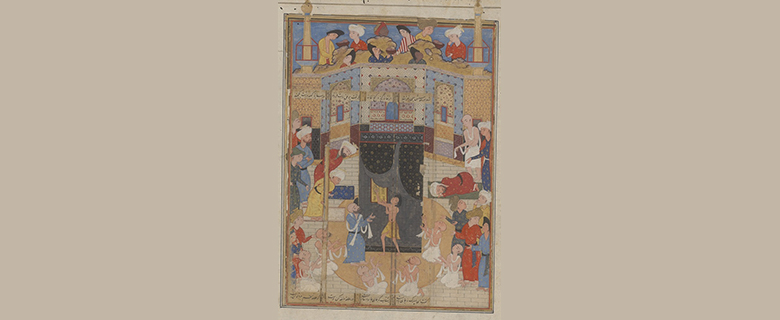
Many literary and historical texts from the Persian and Ottoman periods, such as Shahnameh, Eskandar-nāma, Nizami Ganjavi and others, have miniatures depicting the Holy Kaaba. This miniature is from a Persian manuscript, most likely the classic poem “Laila and the Madman,” by Nizami, about the famous love story of Qays ibn al-Mulawwaḥ and Laila. In the poem, Qays is advised by his father to ask God to spare him from suffering by circling the Kaaba and eagerly holding the Kaaba’s door ring.
This miniature shows the Kaaba and its kiswa, golden door and door ring, revealing a part of the Kaaba building that is not clothed. People are shown circling the Kaaba, praying, prostrating themselves and beseeching God, as outlined in the Holy Qur’an: (And [mention, O Muhammad], when We designated for Abraham the site of the House, [saying], "Do not associate anything with Me and purify My House for those who perform Tawaf and those who stand [in prayer] and those who bow and prostrate.) [Al-Hajj: 26] Some of the faithful are shown in the miniature wearing iḥrām, the plain white ritual clothes worn for pilgrimage.
The Poetry of Nizami Ganjavi: Knowledge, Love, and Rhetoric, edited by Kamran Talattof and Jerome W. Clinton, offers English readers a comprehensive look at the famed poet and his works, including “Laila and the Madman.” A 19th-century translation of the poem by James Atkinson can be viewed in our Heritage Library.

Add new comment